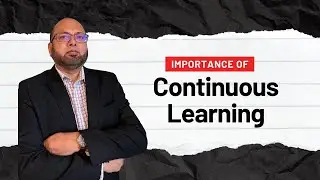Mastering Feedback'' Transform Your Skills at Work and Home
Mastering feedback, both in giving and receiving, is a crucial skill for personal and professional growth. Here’s a breakdown on how to do both effectively:
Giving Feedback
Be Specific and Objective:
Focus on specific behaviors or outcomes rather than generalizations.
Instead of saying, "You did a bad job," try, "I noticed the report had several errors in data analysis."
Use the "Sandwich" Method:
Begin with a positive comment, then provide the constructive criticism, and end with another positive.
Example: "Your presentation was engaging, but there were a few points that could use more research. Overall, you delivered it confidently."
Be Timely:
Give feedback as soon as possible when the action is fresh, so it's more impactful.
Stay Solution-Oriented:
Offer solutions or suggestions for improvement rather than simply pointing out the issue.
Example: "Perhaps using a checklist could help you avoid missing important details."
Be Empathetic:
Consider how the recipient might feel. Use language that encourages improvement, rather than criticism that discourages.
Example: "I know you’re still learning, and this is part of the process. Let’s work on refining that skill together."
Ask for Input:
Encourage a dialogue. Ask for their perspective on what you observed.
Example: "How do you feel about the meeting yesterday? Is there anything you think you could do differently?"
Receiving Feedback
Listen Actively:
Resist the urge to interrupt or defend yourself. Focus on understanding the message fully.
Clarify if Necessary:
If something isn’t clear, ask for specific examples or details to better understand the feedback.
Example: "Could you explain what you meant by being more thorough?"
Avoid Taking It Personally:
Separate the feedback from your self-worth. It’s about your performance or behavior, not you as a person.
Focus on Growth:
See feedback as an opportunity for improvement rather than criticism.
Ask, "How can I improve?" or "What steps would you recommend?"
Manage Your Emotions:
Stay calm, even if the feedback is hard to hear. If you feel emotional, give yourself time to process before responding.
Follow Up:
After receiving feedback, take action. Implement suggestions, then seek further feedback to track your progress.
Creating a Feedback Culture
Encourage Openness: Foster an environment where feedback is welcomed and normalized.
Regular Check-ins: Make feedback a routine part of communication, not something that only happens after problems.
Praise as Much as Critique: Positive feedback is just as important as constructive feedback for motivation.
Feedback is a powerful tool for personal and professional growth.
In this video, we dive deep into the importance of giving and receiving feedback, whether at home or work.
Here’s what we’ll cover:
1/ Why feedback is crucial for development.
2/ Understanding the difference between positive and negative feedback.
3/ The importance of cultivating a feedback culture.
4/ How to view negative (constructive) feedback as an opportunity to improve.
5/ The value of giving kudos and shoutouts to each other.
6/ Why good feedback makes us feel happy and appreciated.
Watch this video to learn how to harness the power of feedback to enhance your skills and build stronger relationships.
Don't forget to like, comment, and subscribe for more insights!
Join our free Skool community at:
skool.com/agile-leaders
00:00 Introduction
00:32 Benefits of feedback
01:36 Handling negative feedback
02:57 Promote feedback culture




![CORRUPTION TIME [0.6.0] [Incutia] باللغة العربية PT ESPAÑOL ANDROID Y PC](https://images.mixrolikus.cc/video/fgo4c0crog0)


























